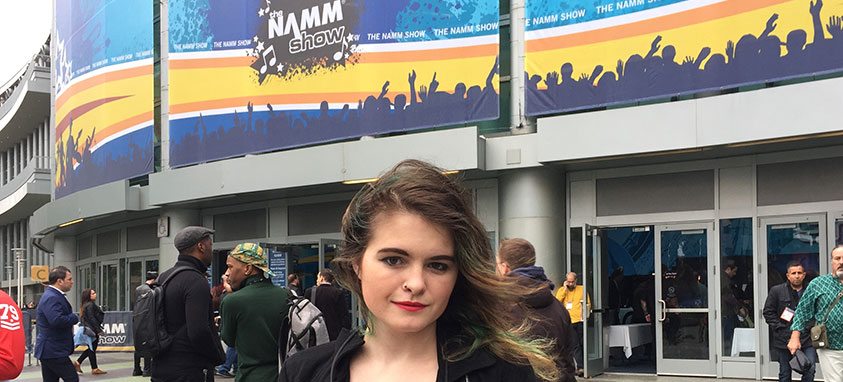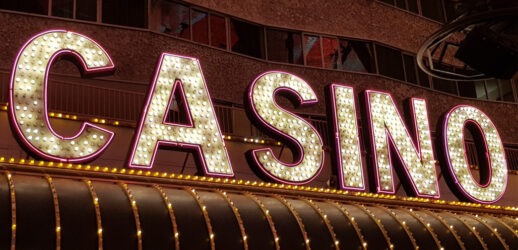Editor’s Note: Our intern, Tess Dunn, attended the premier conference for music technology in Los Angeles at the end of January (photographed above) and came back with this special report.
It’s a busy day at NAMM–the annual convention hosted by the National Association of Music Merchants, which promotes itself as, “the only show that serves as a business crossroads for the music, sound and event technology industries.” Approximately 100,000 people attend over four days in January, wandering around the massive Anaheim Convention Center, where more than 7,000 exhibitor booths promote the latest-and-greatest music equipment and technology. It is extremely loud, as simultaneous musical performances battle with random test notes played on a sea of instruments. In the convention center lobby, away from the booths and sonic cacophony, is a small stage surrounded by chairs. This is NAMM U.
NAMM U is filled with half-hour segments, offering presentations from seasoned professionals ranging from “Proven eBay Success Tips, Secrets and Hacks” to “The Five Reasons People Don’t Buy—and What to Do About It.” The goal of NAMM U is to educate music professionals in the business on a variety of topics in order to promote whichever part of the industry they are in, whether it be producing, performing, creating or marketing. Each session is helpful, but the “class” I’m most interested in is titled “Essential Tips from Social Media Trendsetters” with Minzie Pittman, owner and director of education at the Contemporary Music Center. His talk focuses on utilizing social media to connect with millennials. As a millennial who utilizes social media, I am curious to learn what I can do to stand out.
In an interview with Pittman, he emphasized that the music industry is not so different from the event planning world. “What I share is about style and how the social medium works and who I believe the users are,” he says. Below are several examples shared by Pittman of ways event planners and companies can use social media to reach young professionals.
1. Figure out where you belong. Analyze how and where potential clients interact online, then research what your competition posts. From there, determine how you can add value.
2. Find meaningful ways to connect with millennials. Tapping in to their sense of humor is one way to draw them in, leaving a lasting impression and sense of connection that can lead to a pique of interest in your brand and events.
3. Develop a strong brand. If millennials enjoy your outlook, they are more likely to share their findings with their colleagues and friends, which can lead to a boost in visits to your social media and increased attendance at events.
4. Don’t underestimate the power of emotion. Millennials can tell if you are genuine. If they feel as though your branding may be a performance, they are less likely to respond to you and may even pull away from your business.
5. Post with intention. Random postings that don’t connect to your brand may throw people off, leaving them confused as to what your actual business is about. There’s a difference between showing a variety of talent and posting photos that don’t connect to anything else.
6. Recruit an in-house expert. If you’re having trouble getting into the millennial mindset, it might be useful to invest in bringing a young person on the team. Keep in mind, however, that the term covers a wide range of ages and attitudes so incorporating feedback from a diverse group of people is a good way to source content that will be appealing to anyone who participates in online conversations.





